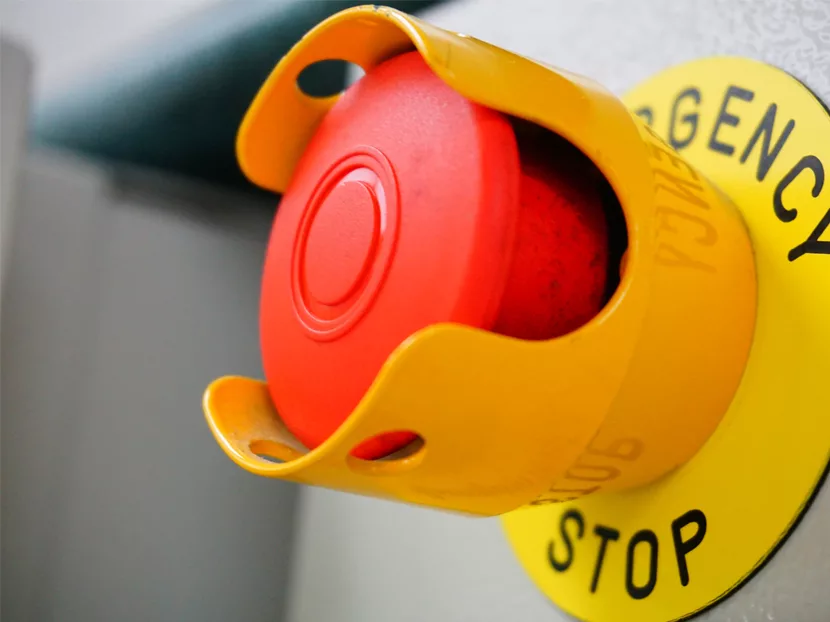The opening paragraphs of any commercial boiler installation manual will inundate you with acronyms, standards, codes and multiple mentions of the authority having jurisdiction (AHJ). This one is courtesy of Dunkirk Boiler. Sound familiar? I hope so:
“Your commercial boiler is furnished with combustion side water or steam controls to meet our interpretation of the American Society of Mechanical Engineers (ASME) Safety Code for Controls and Safety Devices for Automatically Fired Boilers, No. CSD-1.
“Installation shall conform to the requirements of the authority having jurisdiction, or, in the absence of such requirements, to the National Fuel Gas Code, ANSI-Z223.1/NFPA-54 (latest revision). Where required by the authority having jurisdiction, the installation shall conform to the American Society of Mechanical Engineers (ASME) Safety Code for Controls and Safety Devices for Automatically Fired Boilers, No. CSD-1.
“CSD-1 controls and this installation may be subject to approval by local inspectors. Additional parts or equipment may be required. Consult local authorities having jurisdiction before the installation of the boiler.
“CSD-1 controls furnished with commercial boilers are applicable to boilers with inputs above 400,000 BTU/hr. (Models 500-1500)
“Additional parts required by CSD-1 Standards may be necessary to make this boiler compliant. This supplemental instruction manual should be used in conjunction with the installation, operation and maintenance anual for your specific boiler.” (emphasis added)
The AHJ is typically an inspector from the municipality’s building department. Other times, it’s the local fire marshal.
If you haven’t taken the time to read the CSD-1 Standard, you’re going to run into some trouble come inspection time. We’re required to follow these rules so boilers don’t blow up and people don’t die; the inspector is both the check and balance in that equation. The way I see it, understand it and have done it for years goes like this:
• I read the boiler manufacturer’s instructions.
• I review the CSD-1 Standard.
• I consider the city I’m working in, and what it typically requires.
And then I move forward. By the way, you can buy a pdf copy of CSD-1, Controls and Safety Devices for Automatically Fired Boilers, online for about a hundred bucks. Inspectors are human, too, so if they nail you on something you don’t agree with, you’ll be able to have an intelligent conversation with them by being familiar with the document. My goal is to go over some of the highlights as it relates to hot water boilers.
Low-water cutoff, temperature limit controls
The CSD-1 Standard applies to boilers more than 400,000 BTU/hr. and caps at 12,500,000 BTU/hr. At that 12.5 MBH mark, a new standard applies — NFPA 85, Boiler and Combustion Systems Hazard Code.
In my experience, these are the things the authority having jurisdiction looks for immediately. The first observation happens before the AHJ even steps foot in the boiler room. Under CE-110(a) of CSD-1, it states, “A manually operated shutdown switch or circuit breaker shall be located just outside the boiler room and marked for easy identification.”
One guy tried to fail me on this. He was looking for an emergency, red-button-type switch. I had clearly identified the circuit breaker right outside the boiler room entry as “Boiler” and showed him what was referenced in the document. He wasn’t happy about conceding, but he did. Being prepared in that situation paid off for me. I like emergency switches, but it would have been redundant in this case.
Once inside the boiler room, the AHJ’s eagle eyes scan the quality or lack thereof, the cleanliness of the room, serviceability of the boiler and evidence of specific controls required. He likely knows within the 10 seconds whether you will get his exalted blessing or incur his wrath.
Most of the inspectors I’ve dealt with went in search of the manual reset high-limit control (CW-410) and the manual reset low-water cutoff (CW-130) right away. My supply houses made that easy for me because they always included each in their quotes for the boilers. Invariably they would add a Taco LFM0243S-1 for the low-water cutoff control and a Honeywell L4006E1000 for the temperature limit control.
It’s important to note that the manual reset temperature limit is to be used in conjunction with the automatic reset limit control that comes with the boiler. It is set five to 10 degrees higher to prevent nuisance tripping of the manual reset limit.
Also noteworthy, and something the AHJs will catch every time, is to make sure there is no isolation valve installed between the LWCO and the boiler (CW-130c). You don’t want the control sensing the presence of water when the boiler might not have any.
Best practices for all boiler installs
On the visual inspection, the inspector is going to take mental and physical notes on some things that we should be doing on all boiler installations, no matter what the BTU/hr.
A gas piping sediment trap is required and must be at least 3 inches long and at the bottom of the vertical drop, out the bottom run of the tee. A manually operated gas shut-off valve is required and must work freely without the use of your hammer, channel locks or 14-inch steel pipe wrench. It also must be exercised regularly to ensure easy operation by hand.
The pressure relief valve on any hot water boilers shall “conform to ASME Section I or IV, as applicable,” and be installed on a vertical plane.
I’ve seen these valves installed backward, on a horizontal plane, plugged or with threads on the bottom of the discharge pipe. The threads on the bottom of the pipe are just an invitation for some unknowing individual to spin a cap on them to stop a dripping valve while creating a potential bomb. I like to use black iron pipe cut raw, sometimes on an angle; anything to deter the unknowing from doing the unthinkable.
Once the near boiler piping and controls are evaluated, the inspector is then likely to take a close look at how the room is getting its combustion air. I’d say 85 percent of the commercial boiler rooms I’ve been in have gotten their combustion air from a fixed louver that is now covered by plywood or cardboard and duct tape. This is why there are inspectors and fire marshals. They will hold building owners, building engineers and contractors accountable if they’re unable to do so by themselves.
I prefer using a motorized damper with an integral end switch under the combustion air requirements of NFPA 54/ANSIZ223.1 in the National Fuel Code. This way, I don’t need to worry about someone blocking the oxygen necessary for complete combustion. If the damper doesn’t open, the burner circuit is never energized. If the burner doesn’t fire up, the contractor’s phone rings and the problem gets solved the right way. Nobody gets hurt. It’s almost a bullet-proof method of attack.
The end of the CSD-1 Standard provides various illustrations of acceptable gas trains with provisions for valve leakage tests (Figure 1). I wouldn’t expect gas valves leaking to be a common thing, but the provision is there for a reason.
Testing, servicing, maintaining and cleaning under this standard is required, and they often defer to the manufacturer’s recommendations. Proper documentation of all the work done is emphasized throughout CSD-1. This kind of work is not for the rip-and-run crews. It is for heavyweight hydronic teams who take pride in their work while providing the safest possible boiler operation.
For me, spending the hundred bucks for the CSD-1 Standard was worth it. That one instance of circuit breaker versus emergency switch covered the bill. After that, it was money in my pocket, not to mention the peace of mind it always gave me to know it was another job done the right way.
It’s amazing how much you can distance yourself from the pack just by doing your job — the right way.






